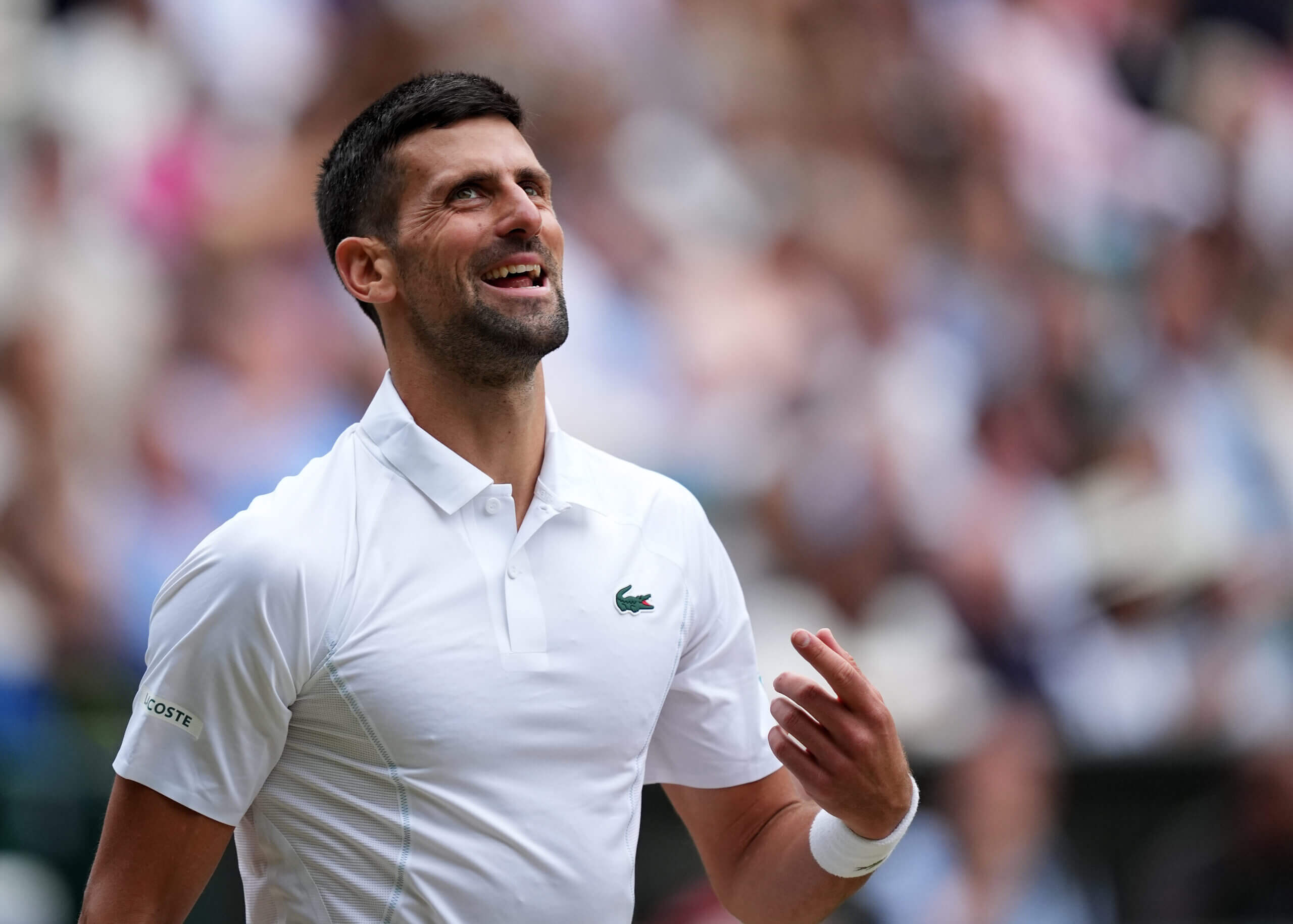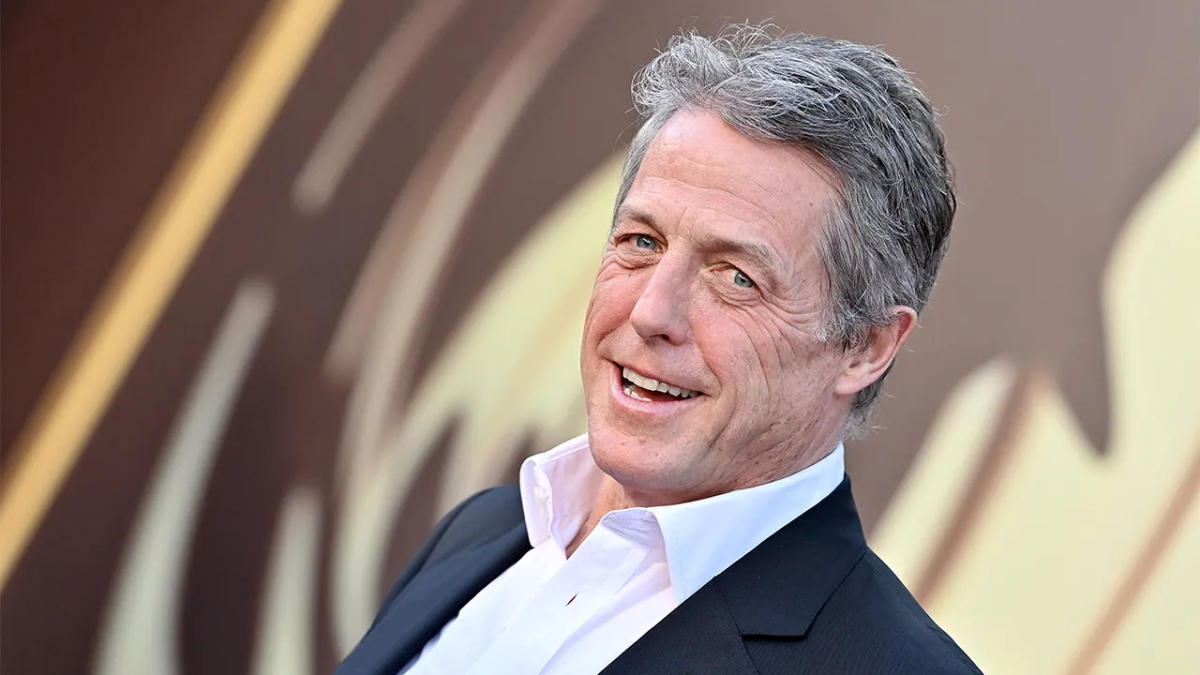WIMBLEDON — Novak Djokovic set up a Wimbledon rematch with Carlos Alcaraz by beating Lorenzo Musetti, 6-4, 7-6, 6-3 on Centre Court on Friday, concluding his run to the final at the All England Club that started just 25 days after surgery on a torn meniscus in his right knee. Just over five weeks after that procedure, he is in his tenth Wimbledon final.
Despite some stunning shots and quality point construction from Musetti, Djokovic effectively countered the Italian’s variation in speed and spin from his backhand slice. When Musetti went cross court into Djokovic’s backhand, he ran around to aim his forehand deep into Musetti’s backhand corner, before wrongfooting the Italian with his forehand off balls down the line, forcing him to hit another slice and reset the point to the pattern that the Serbian wanted to establish.
Djokovic broke at 3-2, before being broken himself at 5-3 when attempting to serve out the set. He could have faltered. He broke Musetti for 6-4 instead.
In the second, Djokovic broke at 2-3, after Musetti had returned the favour by breaking him in the first game of that set. Although the Italian reached a tiebreak, he won just two points, and Djokovic took the momentum into the third, again breaking in the fifth game and nosing ahead far enough to stave off Musetti.
Against American Taylor Fritz in the quarterfinal, Musetti forced the American’s first-serve points percentage 16 points below Fritz’s tournament average with a combination of chip and slice returns; he could only drop Djokovic’s by seven, with the Serbian’s spot-serving prowess much greater.

GO DEEPER
Inside Novak Djokovic’s recovery – accepting outsiders, hyperbaric chambers, Jelena’s worries
Djokovic now awaits defending champion Alcaraz on Sunday, in a mouthwatering rerun of last year’s final, which the Spaniard won in five sets.
After 15 years at the top of the sport, Novak Djokovic has seen every trick
Analysis from Matt Futterman
In Novak Djokovic’s 49th Grand Slam semifinal, he was greeted with Lorenzo Musetti’s festival of slices, off-speed balls, and thunderous changes of pace.
After 20 years as a professional and about 15 at the top of the sport, Djokovic has seen every trick in the book, confronted every style of play, and warded off every means of attack. So when the Italian deployed all the skidding, spinning, and swerving weapons in his arsenal, Djokovic had no shortage of ways to combat them. With his surgically repaired knee at nearly 100 percent, five weeks and two days after the surgery, he also had no limitations.
Plan A was to overpower Musetti, to push him back off the baseline in order move him across it — with a mix of power and precision that no player on the planet has an answer for when Djokovic is on. He blasted away at Musetti’s one-handed backhand the way he once did against Roger Federer on this same grass. Federer rarely had an answer for it, and Musetti didn’t either, because Djokovic was firing for nearly the entire first set — until he cooled off and failed to serve out at 5-3.
No matter. He broke Musetti back in the next game, then made a quick calculation that his purple patch had reached its end. Now it was time for Plan B, which was to teach Musetti a lesson in patience and perseverance.

Djokovic overwhelmed Musetti, who had been so impressive in reaching the semifinals (Ben Stansall/AFP via Getty Images)
Musetti’s variety, a beautiful mix of spins and shapes, had driven high-octane players like Taylor Fritz and Giovanni Mpetshi Perricard mad in previous rounds. It’s been a long time since anyone has driven Djokovic mad on a tennis court — except perhaps the Centre Court Crowd, a few nights ago.

GO DEEPER
Novak Djokovic was becoming the gentleman king of tennis. It didn’t last
Now it was time for him to play his own slices, to show off all the angles and speeds he has to offer. The points took longer, even if the number of shots didn’t change all that much. Musetti broke early; Djokovic broke back; Musetti and Djokovic traded service games as long as they could until the tiebreak arrived.
That allowed Djokovic to go to Plan C, which is really Plan A for him in tiebreaks: play aggressively, but most importantly, make no errors. Widen the margins. The less experienced opponent’s nerves (and they are all less experienced than he is) will make up the difference. An opponent might beat him, but he won’t beat himself, not often and not this time.
Two errors put Musetti down 3-0 in what felt like less than a minute. A drop shot that Musetti caught up to but pushed long got Djokovic to 5-2. Musetti then sliced a backhand into the net. You get the idea.
With a two-set lead, it hardly mattered what strategy Djokovic used. Musetti and everyone else knows that Djokovic has only lost from a two-set lead once in his career, 14 years ago against Jurgen Melzer. It wasn’t going to happen again on the grass of Centre Court.
For what it’s worth, he pushed into the court a little more, trying to shorten the points. He had a big match coming up in a couple days. No need to waste energy.
Twelve days ago, this all seemed like a quixotic quest. He knew it wasn’t. Now we do, too.
What did Djokovic say after the match?
On court:
“Everyone wants to have that secret potion or the formula of success – there is no such thing. There is no secret, we heard so many athletes talk about hard work, but I am a fan of smart work.
“I have seen some of the incredible champions in the last 50 years in different sports, I think they have a lot of similarities with my journey and with the adversity — the stuff that doesn’t come easy and your way. It is something that defines you character and strengthens your will.”
(Jordan Pettitt/PA Images via Getty Images)





